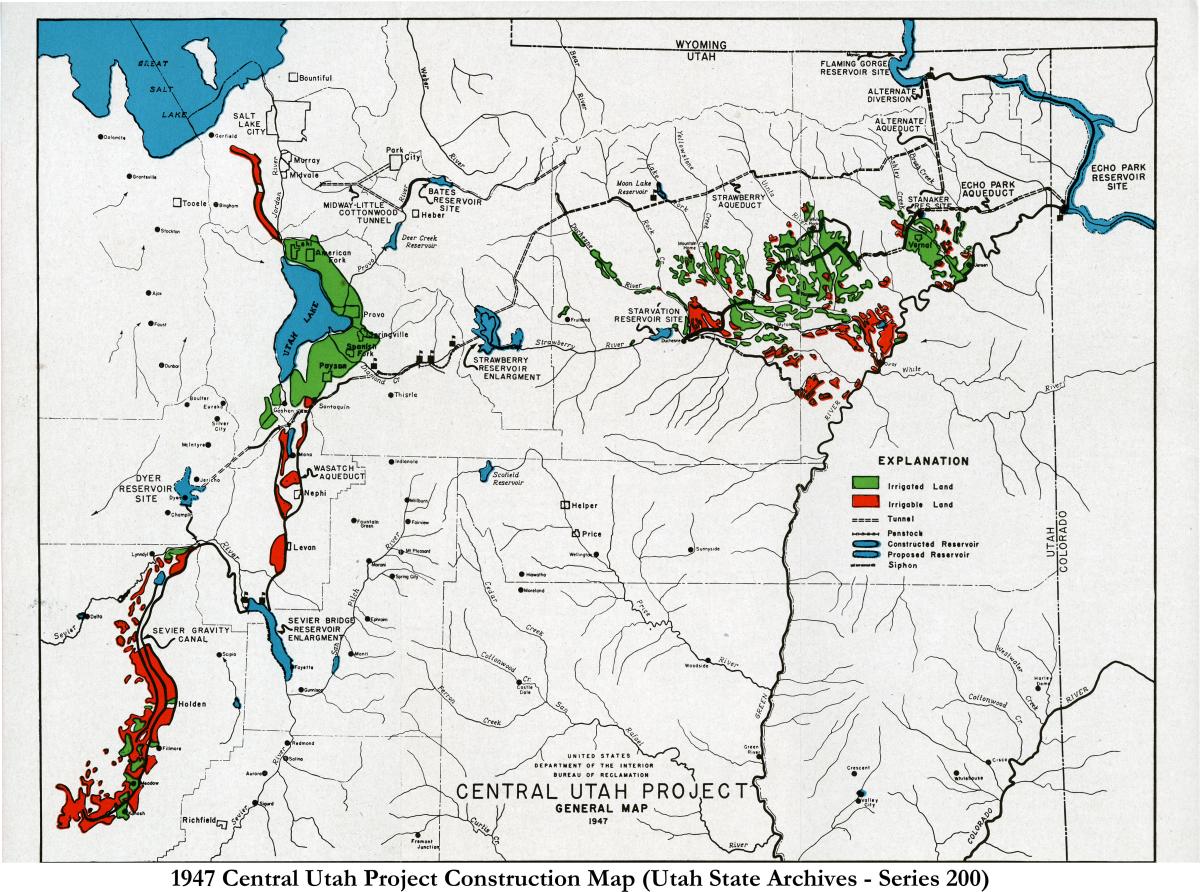Central Utah Project
The Central Utah Project is a US federal water project that was authorized for construction under the Colorado River Storage Project Act of April 11, 1956, as a participating project. In general, the Central Utah Project develops a portion of Utah's share of the yield of the Colorado River, as set out in the Colorado River Compact of 1922.
As originally planned and authorized, the Central Utah Project consisted of six units or sub-projects: the Bonneville Unit, the Jensen Unit, the Vernal Unit, the Uinta Unit, the Upalco Unit, and Ute Indian Unit. The largest and most complex is the Bonneville Unit, which diverts water from the Uinta Basin, a part of the Colorado River Basin, to the Lake Bonneville Basin. The other units were designed to provide for development of local water supplies in the Uinta Basin.
The Central Utah Project develops water for irrigation, municipal, and industrial use; stream flows; and power generation. The project also provides recreation, fish and wildlife, flood control, water conservation, and water quality benefits.
Construction progress on the Bonneville Unit has been slow because of the complexity of the project, the need for environmental analyses since of the National Environmental Policy Act of 1969, and inadequate federal funding. By the early 1990s, the slow progress prompted state and local officials to ask Congress to empower the Central Utah Water Conservancy District to complete the planning and the construction of the remaining portions of the Central Utah Project, including the Bonneville Unit. The Central Utah Water Conservancy District is a water conservancy district organized under the laws of the State of Utah, representing local water users in a ten-county district.
Congress responded to local concerns by enacting the Central Utah Project Completion Act on October 30, 1992. In the Central Utah Project Completion Act, Congress provided the direction for completing the Central Utah Project under a partnership among the Central Utah Water Conservancy District, the United States Department of the Interior, and the Utah Reclamation Mitigation and Conservation Commission, a federal commission created by the Central Utah Project Completion Act. The Central Utah Project Completion Act removed administrative responsibility for the Central Utah Project completion from the United States Bureau of Reclamation, placing it under the Office of the Secretary of the Interior. As a result, the Central Utah Project Completion Act Office, a branch of the Office of the Assistant Secretary for Water and Science located in Provo, Utah, administers the Central Utah Project Completion Act and the completion of the Central Utah Project. (Source: Wikipedia)


